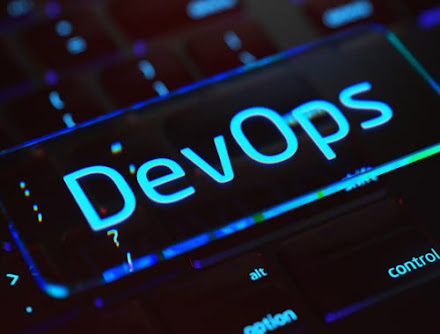10 Essential DevOps Tools for 2025
In the ever-evolving world of software development and IT operations, DevOps has become the backbone of efficient and agile workflows. As we step into 2025, new tools and technologies are continuously emerging, making it crucial for DevOps professionals to stay ahead of the curve. In this blog post, we will explore the ten most essential DevOps tools that are set to dominate the landscape in 2025, helping teams achieve faster development cycles, enhanced security, and improved collaboration.
Why DevOps Tools Matter in 2025?
Before we dive into specific tools, let’s take a quick look at why DevOps tools are more critical than ever:
- Automation & Efficiency – Reducing manual efforts with CI/CD pipelines.
- Scalability – Supporting cloud-native and hybrid-cloud environments.
- Security – Strengthening infrastructure with automated security tools.
- Observability – Providing real-time insights into system performance.
Market Share of DevOps Tools in 2025
| Tool Name | Usage Percentage | Growth Rate (YoY) |
|---|---|---|
| Kubernetes | 85% | 10% |
| Terraform | 78% | 12% |
| Jenkins | 72% | 8% |
| GitHub Actions | 65% | 15% |
| Prometheus | 60% | 9% |
(Source: DevOps Market Analysis Report 2025)
1. Kubernetes – The King of Container Orchestration
Why It’s Essential in 2025
✅ Seamless multi-cloud deployments
✅ AI-powered automation for scaling
✅ Advanced security enhancements
📊 Kubernetes Adoption Trends:
| Year | Adoption Rate |
|-------|--------------|
| 2023 | 75% |
| 2024 | 80% |
| 2025 | 85% |
2. Terraform – Infrastructure as Code (IaC) Champion
Terraform simplifies infrastructure provisioning and ensures that IT teams can manage resources efficiently.
Why It’s Essential in 2025
✅ Multi-cloud compatibility
✅ AI-driven configuration optimization
✅ Improved state management and version control
📊 Infrastructure as Code (IaC) Growth Rate:
| Year | Market Size (Billion $) |
|-------|-------------------------|
| 2023 | 6.2 |
| 2024 | 7.8 |
| 2025 | 9.5 |
3. Jenkins – The CI/CD Powerhouse
Jenkins has been a favorite CI/CD tool for years, and it continues to evolve.
Why It’s Essential in 2025
✅ Huge plugin ecosystem
✅ Enhanced automation with AI-driven insights
✅ Scalable distributed builds
4. GitHub Actions – Native CI/CD in GitHub
This tool enables developers to automate workflows directly within GitHub.
Why It’s Essential in 2025
✅ Seamless GitHub integration
✅ Serverless execution model
✅ Enhanced security with supply chain protection
📊 GitHub Actions vs. Jenkins Popularity
| Tool | 2023 Usage | 2025 Usage |
|---------------|-----------|-----------|
| Jenkins | 72% | 65% |
| GitHub Actions | 55% | 65% |
5. Prometheus – The Ultimate Monitoring Tool
Prometheus is designed to provide real-time monitoring for applications and infrastructure.
Why It’s Essential in 2025
✅ AI-based anomaly detection
✅ Scalable time-series data storage
✅ Seamless integration with Kubernetes
6. Ansible – Simplifying IT Automation
Ansible is a configuration management tool that automates IT operations effortlessly.
Why It’s Essential in 2025
✅ Agentless automation
✅ YAML-based playbooks
✅ Growing adoption in hybrid-cloud environments
📊 Top Configuration Management Tools in 2025
| Tool | Market Share |
|----------|-------------|
| Ansible | 60% |
| Puppet | 25% |
| Chef | 15% |
7. Docker – The Standard for Containerization
Docker continues to be the backbone of containerized applications.
Why It’s Essential in 2025
✅ Standardization of container deployments
✅ Enhanced security with rootless containers
✅ Simplified integration with Kubernetes
8. Datadog – Full-Stack Observability
Datadog provides monitoring, security, and observability in a single platform.
Why It’s Essential in 2025
✅ AI-powered root cause analysis
✅ Advanced multi-cloud monitoring
✅ Serverless observability features
9. Helm – Kubernetes Package Management
Helm simplifies application deployment on Kubernetes by using pre-configured charts.
Why It’s Essential in 2025
✅ GitOps and Helm integration
✅ Standardization of Kubernetes applications
✅ Easy rollback and update management
📊 Top Kubernetes Deployment Tools in 2025
| Tool | Market Share |
|-------|-------------|
| Helm | 70% |
| Kustomize | 20% |
| Others | 10% |
10. Grafana – The Visualization & Monitoring Expert
Grafana enables teams to create beautiful, customizable dashboards for monitoring applications.
Why It’s Essential in 2025
✅ AI-driven data visualization
✅ Multi-cloud observability
✅ Integration with Prometheus, Elasticsearch, and more
📊 Grafana Usage in Enterprises
| Year | Adoption Rate |
|-------|--------------|
| 2023 | 50% |
| 2024 | 60% |
| 2025 | 75% |
Conclusion
As DevOps continues to evolve in 2025, leveraging the right tools will be key to optimizing workflows, improving security, and scaling applications efficiently. Kubernetes, Terraform, Jenkins, GitHub Actions, Prometheus, Ansible, Docker, Datadog, Helm, and Grafana represent the cutting-edge tools every DevOps team should adopt.
What DevOps tools are you using in 2025? Share your thoughts in the comments...............

Comments
Post a Comment
If you have any doubts , You can let me know